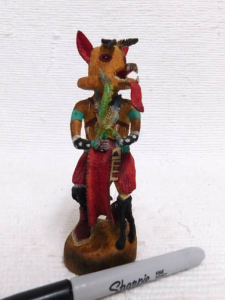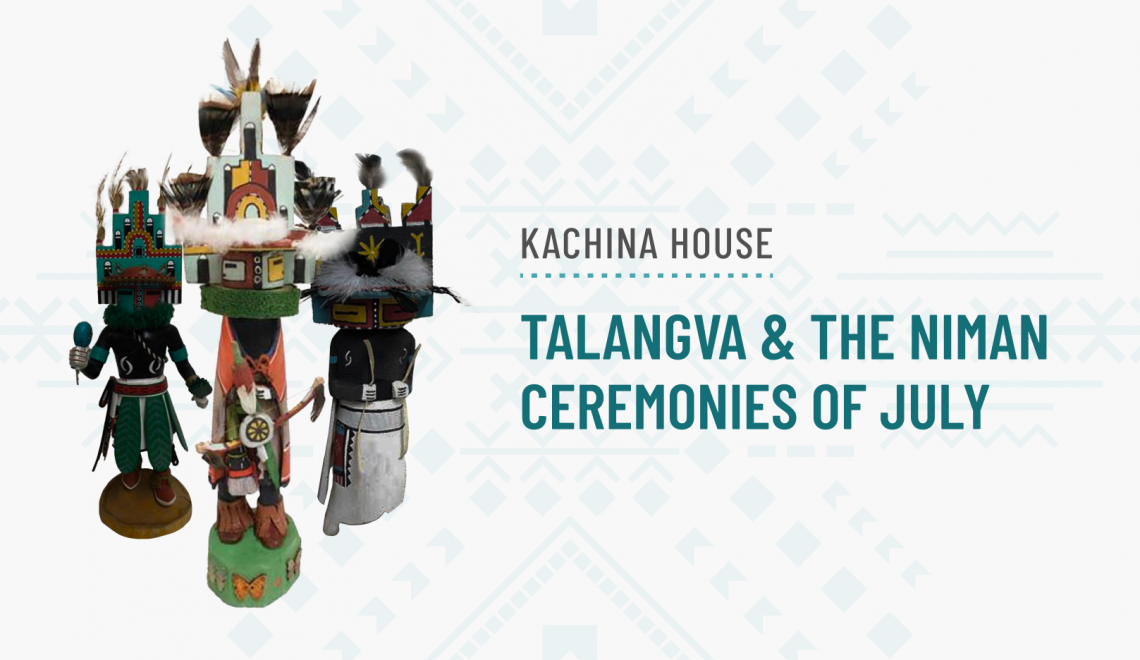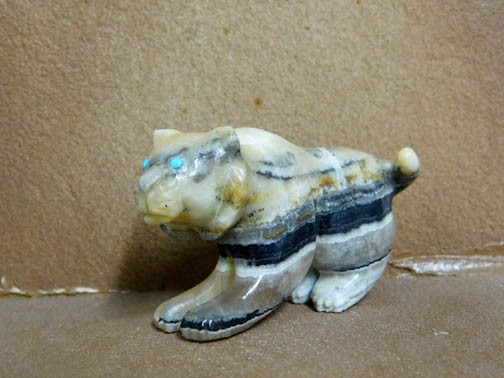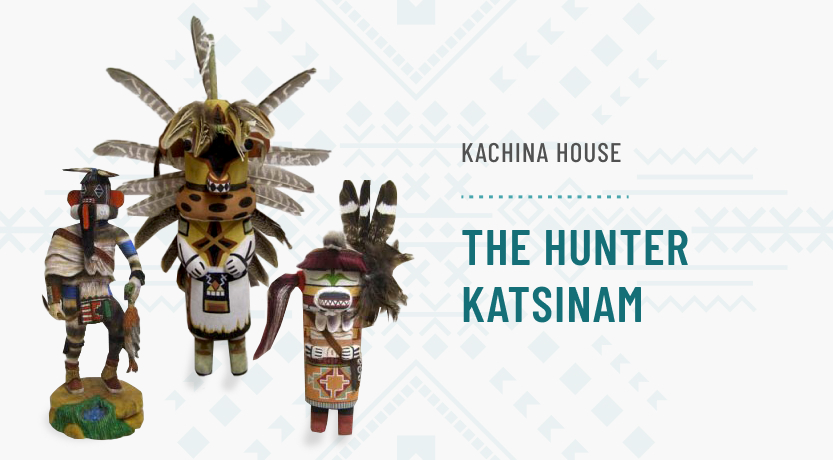
Updated 5/18/23
The Hunter Katsinam represent specific hunting duties assigned to the men of the Hopi tribe. They often have a spear or bow and arrow. Hunter Katsinam are thought to protect the hunters. They also serve as a reminder for men to be mindful of their hunting techniques and the respect they must have for all living creatures. The Hunter Katsinam are unique beings that bring together spiritual, cultural, and artistic aspects of the Hopi people.
During Hakitonmuya, the Hopi people work together to prepare for the growing season. Hakitonmuya, also called “the waiting season,” occurs in May, and marks the beginning of the planting season. Although it is too early for most crops to be planted, bean, pumpkin, and watermelon seeds can be put into the soil, symbolizing the start of the growing season. When these earliest crops are planted, special dishes are prepared from cornmeal, and much hunting is done. Noone in the tribe is inactive during Hakitonmuya; each individual is given specific tasks to complete.
Men are tasked with hunting duties and there are certain hunter Katsinam that represent this important responsibility. The hunting duties include tracking, trapping, and shooting game in the surrounding area. Each of the following katsinam has distinct characteristics and physical features. Let’s meet the Hunter Katsinam!
Who Are The Hunter Katsinam?
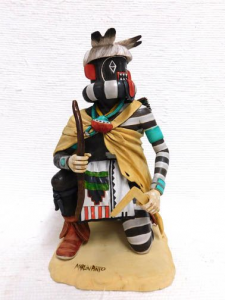
Meet Siyangephoya
Called “the left-handed hunter,” Siyangephoya is strong and skillful, though he moves rather strangely. Carrying his bow in the hand opposite that used by most hunters, this Katsina bobs as he moves – always taking small steps.
Meet Kweo
A powerful and revered figure across Native American tribes, the wolf is an incredible hunter – called Kweo by the Hopi people.The wolf Katsina always has big, sharp teeth and can be seen carrying a ceremonial staff with prayer feathers and greenery . This stick represents the prayers he sends up to the gods for a successful hunt and the bushes he hides in while stalking his prey who are the Katsinam he typically appears with.
Meet Kokoshori
Firewalker originated at Zuni Pueblo. The Zuni people have a long “fraternity with fire.” This blackened Hopi Firewalker (Kokoshori) is the younger brother of the Hemis Katsina. He represents the germinating spirit of corn and the colored spots represent all the different kinds of corn (yellow, blue, red and white). He is responsible for bringing food and will sometimes have a rabbit or sheep hanging from his back.

Meet Wukoqala
Called “the big forehead,” Wukoqala is a good hunter who provides encouragement to the young boys of the village. Although he has not appeared to the Hopi people for many years, he remains an important hunting symbol.
Meet Makto
Little is known about the Rabbit Stick (Makto). The doll is derived from an old mask found at First Mesa and described by J. Walter Fewkes in 1903. It would seem he was a Katsina that celebrated the hunt, for the Hopi used the curved stick you see on the face of the mask to throw at rabbits and other small game
If you are looking for a gift to give during Hakitonmuya, a hunter Katsinam is a wonderful choice. Home to an extensive collection of Hopi Katsina dolls and other Native American crafts and collectibles, Kachina House is located in Sedona, Arizona. For all your Native American art purchases, shop with us online or by phone at 866-587-0547.

